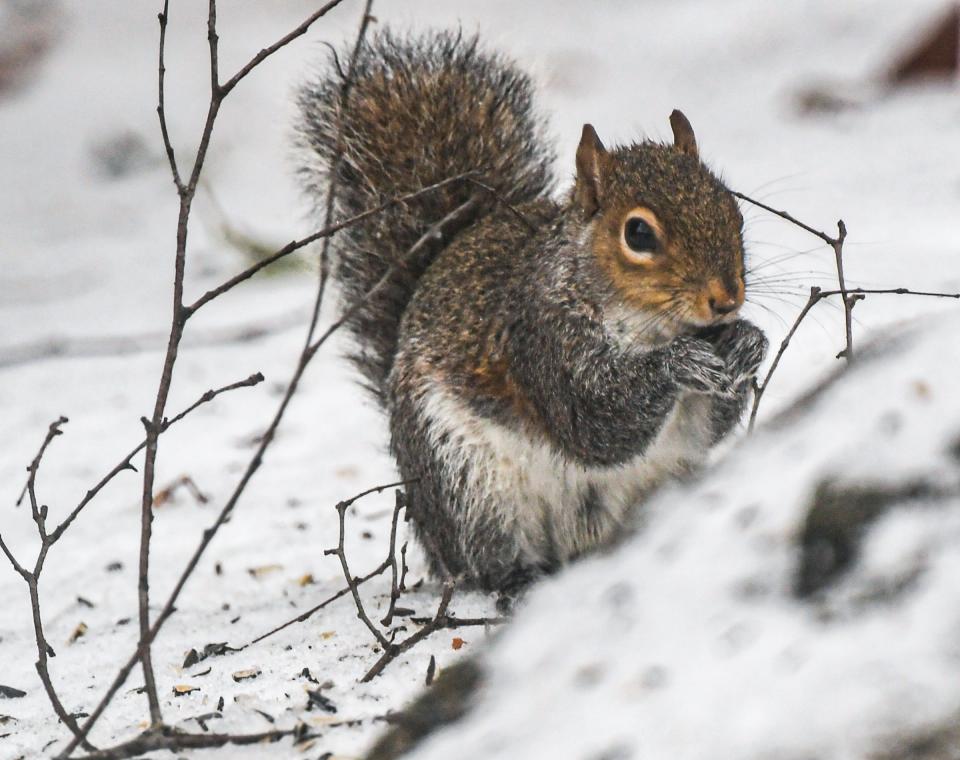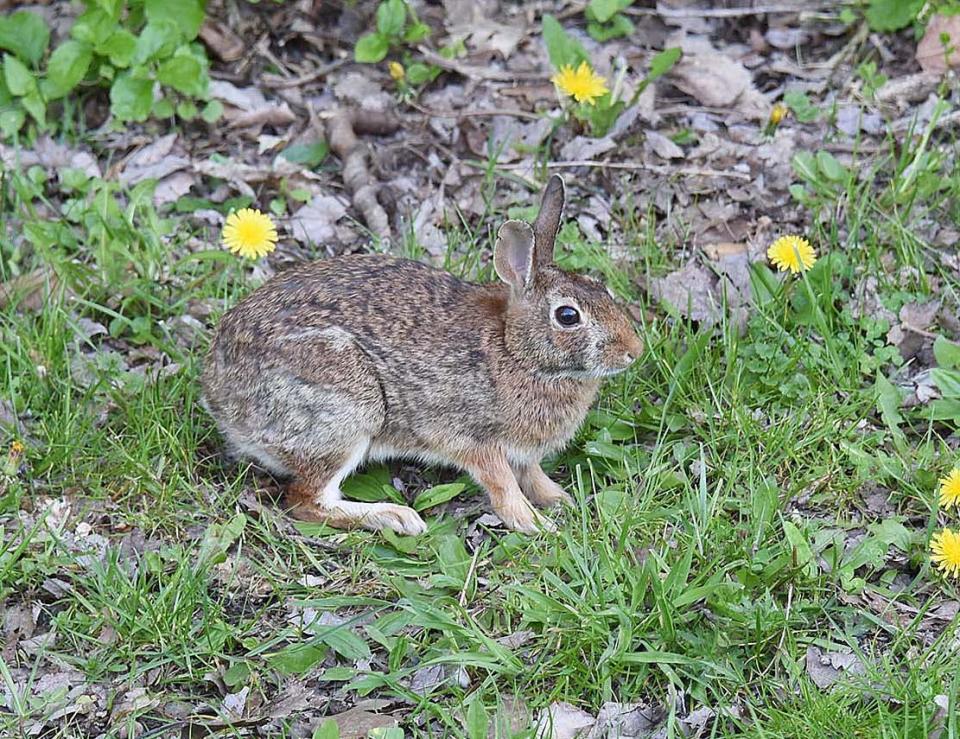Here's why Iowa hunters should give upland game a try

Hunting in Iowa has changed significantly over the years. Four decades ago wild turkey and deer were scarce or non-existent in much of the state. Most hunters started out shooting squirrels and rabbits before moving on to pheasants and/or waterfowl. Only then did they graduate to larger game, if they had access to it at all.
Since then turkey and deer restoration efforts have been beyond successful, and youth seasons offer beginning hunters first crack at both. Many youngsters, some not yet school-aged, get their start in the field taking advantage of this big-game bounty.
Both species lend themselves to hunting from a ground blind, eliminating the need for stealth or silence. Youngsters lacking the strength or maturity to carry a loaded weapon afield can utilize a shooting support under the watchful eye of a mentor who is able to offer advice about safe and appropriate shot selection.
While it’s hard to fault anything that gets youth involved in hunting early, this new emphasis on bigger game has come at a cost. Having cut their teeth on deer and turkeys, many younger hunters never “regress” to hunting small game. When they in turn become parents and mentors, they have no upland tradition to pass on to the next generation.
That’s a shame. Upland game offers hunters the opportunity to extend their season while honing woodsmanship, marksmanship, firearm safety skills and patience. Rabbits and squirrels are abundant and underutilized in most places, while pheasants are rebounding from recent historic lows.
Minimal gear is required to hunt upland game, and most hunters needn’t travel far to find it. Bag limits are generous, and all three species make outstanding table fare. Hunters who have forgotten, or never experienced, the simple joy of pursuing upland game should consider giving it a try. The following tips will help.
More: How weather conditions affect ice fishing
Go Nuts!
Finding gray or fox squirrel habitat is as simple as locating nut-producing trees. Oaks and hickories are most abundant in Iowa and are highly favored by both species, although they’ll also utilize walnuts, beechnuts and several others if available. When nut trees are lacking or unproductive, squirrels will readily turn to waste grain.
In addition to making dens in tree cavities, squirrels will build nests using sticks. These are easy to spot, while more attentive scouting will reveal cut nutshells or crop remnants where bushytails have been feeding.
Squirrels generally favor areas where mature trees create a closed canopy to shade out undergrowth. This allows them to find nuts more readily and to see approaching danger when on the ground. Such areas also make it easier for hunters to spot squirrels and offer clean shooting lanes.
Having identified a good spot, many hunters simply slip in quietly at dawn, take a seat against a tree and wait for action. Wearing appropriate camo, including a facemask, is helpful.

Commercial squirrel calls are purported to generate a response from curious or territorial animals. Some old-timers also recommend tapping two quarters together to imitate the sound of a squirrel cutting nuts.
Late-arriving or restless hunters may prefer still-hunting. Some veterans recommend slipping noiselessly among pockets of cover while stopping frequently to look and listen, just as when deer hunting. Others suggest trudging through the woods in a straight line like a nature lover on a Sunday hike, reasoning that squirrels accustomed to human intrusions are unlikely to flee from a hunter who doesn’t behave like a predator.
Two or more hunters working as a team can use a combination approach by posting one partner while having the other still-hunts through the area. Squirrels on the ground frequently offer a shot to the poster when fleeing the mobile hunter, while treed squirrels may show themselves to one hunter when moving to hide from the other.
Some purists insist using a .22-caliber rifle is the only sporting way to hunt squirrels. While this does test marksmanship, launching a bullet into the treetops presents significant safety concerns, particularly on public land. Most public areas require non-toxic shot, and many hunters choose to use it exclusively.
A .410 loaded with #4 or #6 lead-equivalent shot is ideal, but for simplicity’s sake you can use the same 3-inch 12 gauge shells with #3 steel shot for almost all upland and waterfowl hunting. The larger shot size provides adequate penetration on tough-skinned squirrels while minimizing the number of pellets to be extracted during cleaning.
More: These seven things can ruin ice fishing success. Here's what changes you should make in 2022
Into the briar patch
Those unfamiliar with “rabbitat” would do well to think of cottontails as pint-sized deer and look for appropriate bedding areas. Thickets, shelterbelts, overgrown fence lines, blowdowns and brush piles all fit the bill, although during warmer weather they can also be found in stands of upland grass. Habitat needn’t be pristine: rabbits will gladly utilize fallen-in buildings, junked cars or farm machinery, wire piles, etc. as well.
Cottontails have a varied diet including grasses, forbs, grain and woody browse. Many gardening and landscaping enthusiasts consider them a serious pest and will gladly offer hunting access. Areas where rabbits have gnawed on vegetation are easy to spot, as are their distinctive raisin or pea-sized and -shaped droppings.

Stand hunters can watch for rabbits sunning adjacent to bedding cover or moving to nearby feeding areas, particularly early or late in the day. Stomping through bedding and loafing habitat to flush rabbits is effective, particularly when hunting with a human or canine partner. Posting one hunter near escape cover while another does the stomping often works well.
More: Hunting coyotes? Follow this playbook for a successful hunt
Rabbits aren’t particularly thick-skinned, meaning a .22 rifle or smaller-gauge shotgun is adequate. As with squirrels, larger shot sizes help to minimize meat damage. Headshots should be attempted whenever possible, as most of the meat is in the back half of the rabbit.
As always, be sure to check the Iowa DNR website, or hunting manual for hunting season dates, times, harvest limits and possession limits. It may be late January, but there is still plenty of hunting to be done.
This article was provided to the Register courtesy of The Iowa Sportsman magazine. For information about the publication and to subscribe, visit iowasportsman.com or call 877-424-4594.
This article originally appeared on Des Moines Register: Why Iowa hunters should try hunting squirrel and rabbits

